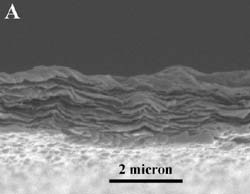Materials Sciences
Materials management deals with the research, development, manufacturing and processing of raw and industrial materials. Key aspects here are biological and medical issues, which play an increasingly important role in this field.
innovations-report offers in-depth articles related to the development and application of materials and the structure and properties of new materials.

Glow of success for new plastics technology and glow in the dark torch
New glow-in the-dark plastic technology has enabled researchers to develop a torch that glows in the dark, so you can find it in the dark. Collaboration between DualGlo Ltd, a Hereford technology company and Innovation-Direct, a free consultancy service for SME companies delivered by the Universities of Warwick and Wolverhampton, has developed a unique product that is now entering markets all around the world.
After turning to the Innovation Direct advice centre DualGlo Ltd, a small techno

Parts containing ceramic material
To date, machines carrying out electroerosion-based machining processes have only had use of automated parameters for metallic materials such as steel. In his thesis, Navarre Public University researcher and lecturer, Iñaki Puertas, presents technologies for those applications using ceramic material, a highly interesting development from a technological viewpoint as it enables the use of ceramics in the fabrication of parts requiring great hardness and durability such as medical prothesis or those de

Spiderman Becomes a Reality at The University of Manchester
Scientists at The University of Manchester have developed a new type of adhesive, which mimics the mechanism employed by geckos (a type of lizard) to climb surfaces, including glass ceilings.
Researchers within the newly opened Manchester Centre for Mesoscience and Nanotechnology at the University have been working on the new adhesive since 2001, after learning the mechanism of gecko’s climbing skills from biophysicists. Now they have been able to manufacture self-cleaning, re-attachab

Electron nanodiffraction technique offers atomic resolution imaging
A new imaging technique that uses electron diffraction waves to improve both image resolution and sensitivity to small structures has been developed by scientists at the University of Illinois at Urbana-Champaign. The technique works on the same principle as X-ray diffraction, but can record structure from a single nanostructure or macromolecule.
Determining the structure of materials — such as protein crystals — is currently performed using X-ray diffraction. However, many small structur

The seashell´s inner beauty
There is more to mother-of-pearl than good looks. Also called nacre, the gleaming, white material is renowned in scientific circles for its strong, yet flexible, properties. Now researchers have developed a nanoscale, layered material that comes close to nacre’s properties, including its iridescence.
The ability to nanomanufacture artificial nacre may provide lightweight, rigid composites for aircraft parts, artificial bone and other applications.
Reporting online in Nature Mater

How black is ‘Super Black’?
Scientists at the National Physical Laboratory (NPL), Teddington, Middlesex, UK have good news for manufacturers and users across the optical instrumentation industry. Based on existing processes developed in the US and Japan, a team of researchers at NPL has developed a new technique for commercial manufacturing of ultra-black coatings, which represent one of the blackest, lowest reflectance surfaces developed so far.
Performance of optical instrumentation depends on the quality of material